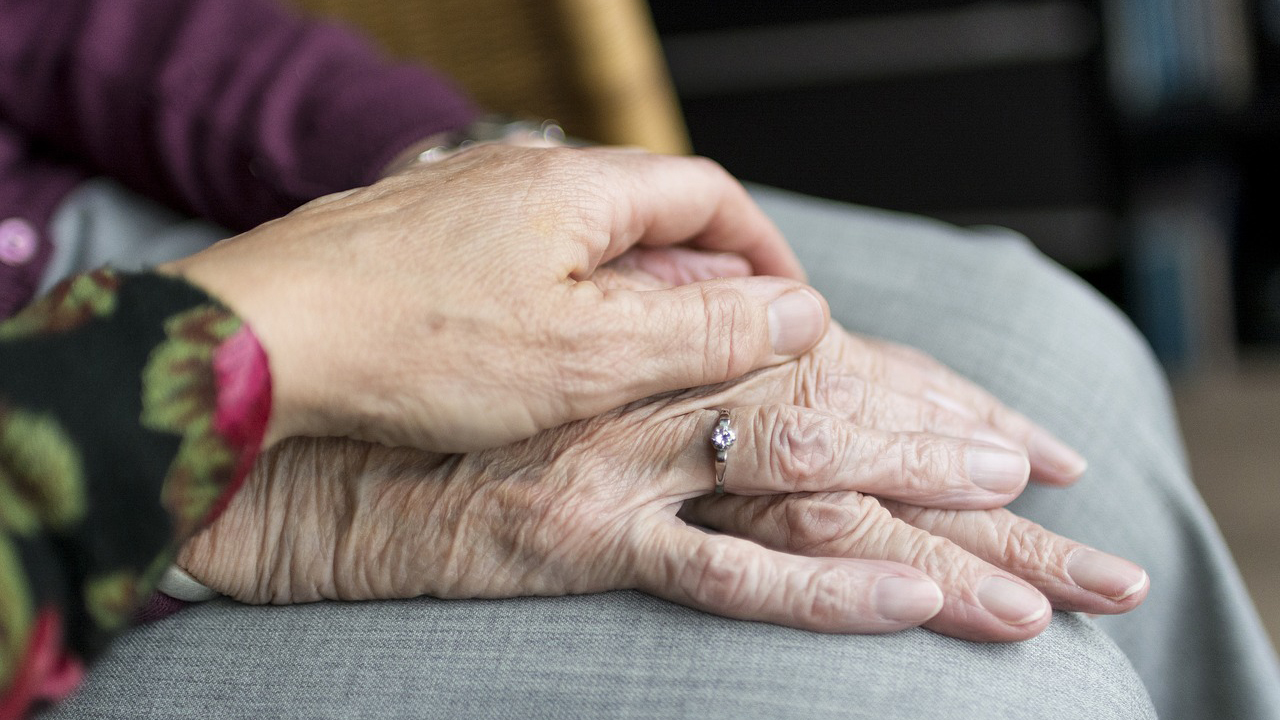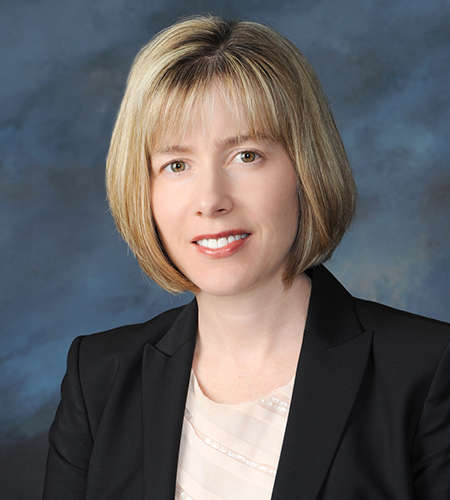‘We are all Vulnerable’: Palliative Care during COVID

In early March 2020, a cruise ship carrying passengers afflicted with COVID-19 docked in Oakland, California, and many of the patients were sent to the hospital where Liz Durkin, M.D. ’93 works as a palliative medicine physician.
“These patients were fortunately not critically ill, but we were aware early of the challenges for staffing and PPE [personal protective equipment] in caring for COVID-positive patients,” said Durkin, who works at Permanente Medical Group in northern California. “Our palliative hospital teams have been working on preparedness for a possible surge in cases for the last two months, including new workflows relying on virtual visits, even with hospitalized patients, to minimize the need for PPE in the room. We have also been working on educating other physicians and team members on how to care for patients at the end of life in a compassionate and dignified manner.”
As the COVID-19 pandemic has spread across the United States, Scranton palliative care physicians and nurses are a vital part of caring for patients and supporting their families in isolating circumstances. Both in Scranton and on the West Coast, Royals in palliative care are using technology to maintain connections among patients, families and care teams. And they have been bolstered by community support in times that are unnerving for patients, families and health care workers alike.
Palliative care is not the same as hospice care, which begins after treatment for a disease concludes. While both these methods aim to keep patients comfortable, palliative care is for anyone with a serious or chronic illness and is best begun at diagnosis. Palliative care physicians and nurses, working with specialists who provide curative treatments, help patients understand their choices for medical treatment and recommend treatments that can help control symptoms and improve quality of life.
“In palliative medicine, our goal is to make sure that we are inclusive of all of a patients’ beloveds, which usually includes meeting them in person and having large family meetings to discuss the plan of care for a patient,” said Lauren Nicholls, M.D. ’11, who works at Geisinger Community Medical Center in Scranton. “We make it a priority to break down any barriers between families and the medical team.”
Patricia Wright, Ph.D., a University of Scranton nursing professor, said that palliative care is especially important for patients with COVID-19, since there is no immediate cure and it is life-threatening for some patients.
“Palliative care is often incorporated into the treatment of chronic conditions, but it becomes even more important when a disease is potentially life-threatening,” said Wright, who specializes in community health and hospice care. “In cases of COVID-19, the challenge is to hope for the best while preparing for the worst, meaning that even patients with mild symptoms should be invited to develop an advance care plan in the event that their condition rapidly worsens.”
Working with patients and family members to do just that has become more challenging during the pandemic, according to Nicholls. Her hospital has a no visitors policy in place, unless patients are dying. But patients dying of COVID-19 are not allowed visitors for fear of passing on the disease to family members.
“Now, in addition to the physical barrier of distance between us and the family, we have the physical barrier of the PPE between us and the patients,” Nicholls said. “The entire manner in which I typically connect with families has been disrupted. To make up for the lack of physical contact with patients and families, I have been relying on the telephone far more and making sure to relay the little things, such as get-well cards made by local children for our ICU patients, to let families know that their loved ones are not just another name in a bed; they are a whole person, being loved by our team in their absence.”
In Oakland, Durkin is employing similar phone and video communication methods with patients’ families, especially elderly patients who are without their usual support systems in hospitals with restricted visitor policies. Here in Scranton, Laura (Pikulski) Marion ’92 is the assistant vice president of Allied Services Hospice and Palliative Programs in Scranton, and she is working with patients in their homes, nursing homes, or the organization’s hospice care center. She’s helped implement telemedicine virtual appointments for patients and helps them stay connected to their families with video calls instead of in-person visits.
“We’re rewriting policies almost daily as things change so quickly with the Department of Health and the CDC. Some days trying to manage, learn, read, and share all the information is exhausting, and the days are long and I tend to be weary,” said Marion. “Loved ones aren't seeing their family for two to three weeks, elderly are isolated and no one is immune. Healthy people are being stricken by this virus. This is not hype; this is real and it is highly contagious.”
Durkin shared Marion’s concern for the elderly and isolated patients, as well as the health care workers treating them.
“I think the hardest part of this is the unknown,” said Durkin. “I am vulnerable to this infection, and even otherwise healthy individuals may have poor outcomes when faced with this disease. We are usually able to have the perspective of ‘distance’ from our patient's illness, but not in this case. We are all vulnerable.”
Even in the face of fear and unknown, Marion said people in the Scranton community are rallying to support both patients and health care workers.
“Folks reaching out to offer to make homemade masks and donate, local restaurants offering to feed our nurses and staff, donations of food being dropped to the hospice center,” Marion said. “There are folks offering to sit and make phone calls to our home patients to make sure they are not isolated. Amazing things are coming out of this on a daily basis.”










